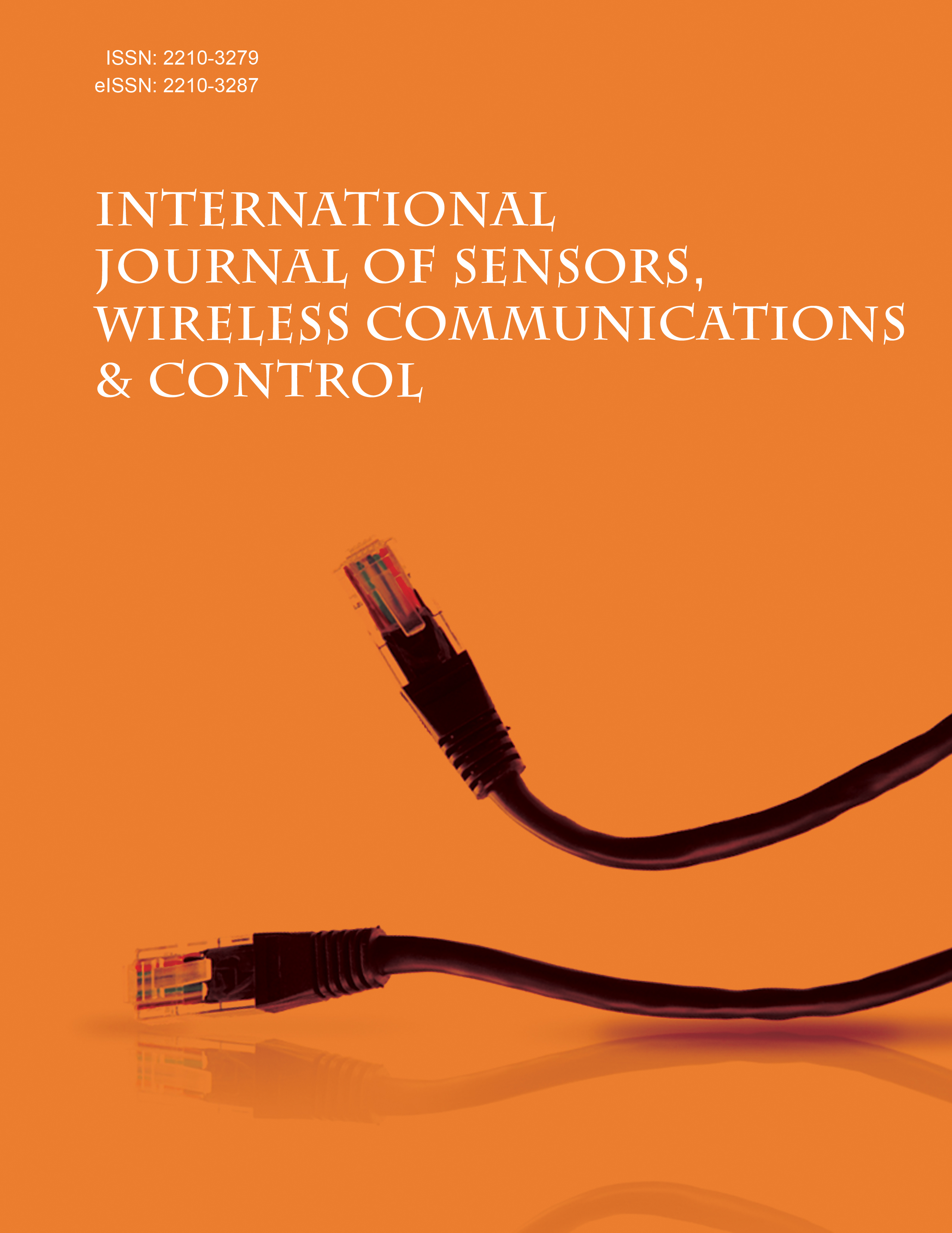- Home
- A-Z Publications
- International Journal of Sensors Wireless Communications and Control
- Previous Issues
- Volume 1, Issue 2, 2011
International Journal of Sensors Wireless Communications and Control - Volume 1, Issue 2, 2011
Volume 1, Issue 2, 2011
-
-
PRISM: A Novel Protocol for Real-Time Synchronous Acquisitions in WSNs
More LessAuthors: Emanuele Goldoni and Paolo GambaWireless Sensor Networks are often considered as low-rate asynchronous systems for distributed monitoring. However, there are several real-time and high data-rate applications where the traditional behavior of WSNs could give raise to channel sharing problems, thus limiting the usefulness of this technology for these emerging fields. This article proposes and discusses PRISM (Protocol for Real-tIme Synchronous Monitoring), a Read More
-
-
-
QoS-Adaptive Routing Protocol Design for Multi-Hop Cognitive Radio Networks Considering Multi-Link Interference
More LessAuthors: Xin-Lin Huang, Gang Wang, Qing-Quan Sun and Zhuo-Ran CaiRecently, cross-layer routing design for cognitive radio networks (CRNs) has been studied widely. However, none of the previous literatures discuss multi-link interference (in routing protocol design), which results in queuing delay and backoff delay. A large queuing and backoff delay will reduce the transmission efficiency of a link and increase the cumulative end-to-end delay. In this paper, we first propose a multi-link interferenc Read More
-
-
-
Observability and Optimal Sensor Placement
More LessA definition for the measure of observability is introduced. It is illustrated by two examples of nonlinear systems defined by ordinary and partial differential equations. Using computational dynamic optimization, the concept of observability is numerically implementable for a wide spectrum of problems. Some topics addressed in this paper include the observability based on user-knowledge, the determination of strong observab Read More
-
-
-
The OPPORTUNITY Framework and Data Processing Ecosystem for Opportunistic Activity and Context Recognition
More LessOpportunistic sensing can be used to obtain data from sensors that just happen to be present in the user’s surroundings. By harnessing these opportunistic sensor configurations to infer activity or context, ambient intelligence environments become more robust, have improved user comfort thanks to reduced requirements on body-worn sensor deployment and they are not limited to a predefined and restricted locati Read More
-
-
-
Hybrid ARQ Based on Rateless Coding for Wireless Sensor Networks
More LessAuthors: Lorenzo Favalli, Pietro Savazzi, Emanuele Goldoni and Matteo LanatiThis paper shows an Incremental Redundancy Hybrid automatic repeat request (HARQ) scheme, based on rateless coding, for wireless sensor network (WSN) protocols. The proposed approach proved to be effective under energy consumption constraints, making it suitable for possible applications to WSNs. Moreover, the use of a rateless coding scheme increases the average throughput by limiting the length of retrans Read More
-
-
-
A Common Control Method of Three-Dimension Chaotic System
More LessAuthors: Jun Kang and Wenjun MengThis paper proposes a common control method of three-dimension chaotic system by backstepping method. This method is applied to achieve chaos control for Lorenz, Chen and Lu systems. Based on Lyapunov stability theory and Jacobian matrix, control laws are derived. The greatest advantage of this method is that can be controlled effectively to be stable at any given point with a common linear controller. The result Read More
-
-
-
A Cooperative Diversity-Based Opportunistic Virtual MISO (OVM) Protocol for Multi-Hop Wireless Networks
More LessAuthors: Van Nguyen, Dmitri Perkins and Morrison ObengWireless communications are highly error-prone due to inherent wireless channel effects, which include interference, multi-path fading, and noise. The conventional approach to reducing the effects of frequent channel errors is to attempt retransmitting the corrupted frames. This solution however introduces long end-to-end delay and channel usage inefficiency, especially in multi-hop wireless networks. In this work, we intr Read More
-
-
-
Pinball Routing Elimination Algorithm for Multihomed Mobile Network
More LessAuthors: Sulata Mitra and Sumanta PyneA solution of the pinball routing problem in a multihomed mobile network is proposed in the present work. All the communication to and from the mobile network node in a nested mobile network passes through the tunnel between mobile router and its home agent as mentioned in network mobility route optimization problem statement. Such problem is formally known as pinball routing problem. But in the present scheme t Read More
-
Most Read This Month
Article
content/journals/swcc
Journal
10
5
false
en


